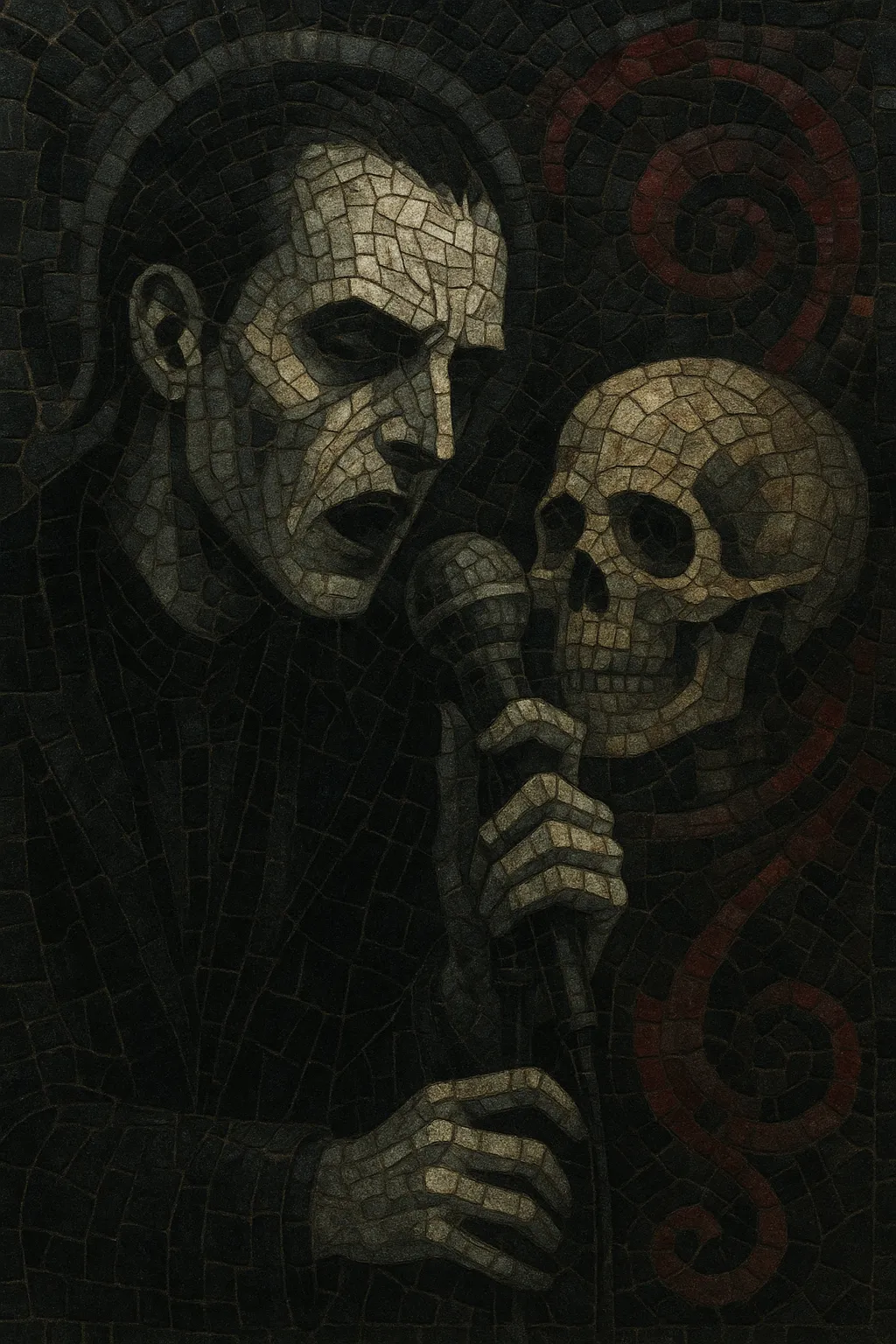Neue Deutsche Todeskunst ("New German Death Art") is a German darkwave/goth movement that emerged in the early 1990s. It foregrounds German‑language, poetically ambitious lyrics delivered in a dramatic, declamatory or spoken style (Sprechgesang), set against somber darkwave, gothic rock, and neoclassical instrumentation.
The sound typically blends synthesizers, piano, string pads, and orchestral timbres with restrained drum programming, creating a theatrical, sepulchral atmosphere. Lyrical themes explore death, transience, existential dread, and metaphysical questions, often referencing classic German literature and philosophy. Live performances frequently incorporate performance art, stage props, and dramaturgical elements to emphasize the genre’s "art" ethos.
Neue Deutsche Todeskunst coalesced in Germany’s darkwave/goth milieu around the time of German reunification. Clubs, fanzines, and indie labels nurtured bands who privileged German‑language texts and theatrical delivery over dancefloor functionality. Early releases by Das Ich, Goethes Erben, and Lacrimosa (all 1991) set the template: dramatic vocals, poetic existentialism, and brooding, neoclassical‑tinged arrangements.
Musically, the scene fused darkwave and gothic rock with neoclassical dark wave and occasional industrial textures. Arrangements emphasized piano, strings (real or synthesized), choirs, and slow to mid‑tempo drum machines soaked in reverb. Vocals oscillated between Sprechgesang and impassioned baritone singing. Lyrics drew on German Romanticism and modernist poetry, favoring allegory, death imagery, and philosophical introspection. The stagecraft—costuming, props, and lighting—reinforced a black‑theatre, "art as ritual" stance.
Labels like Danse Macabre (Das Ich) and Hall of Sermon (Lacrimosa) provided a platform, while festivals and alternative press codified the term Neue Deutsche Todeskunst. Alongside flagship acts, groups such as Relatives Menschsein, Dronning Maud Land, and Forthcoming Fire broadened the palette from austere chamber‑darkwave to more rock‑leaning variants, but retained the literary and theatrical core.
By the late 1990s, futurepop, EBM crossovers, and Neue Deutsche Härte diverted mainstream goth attention, yet NDT’s imprint endured. Its embrace of German‑language, performance‑oriented dark music influenced dark cabaret and aspects of German symphonic/gothic metal. Reissues, retrospective compilations, and sporadic new works by key artists kept the aesthetic alive, and its dramaturgical approach remains a touchstone for German‑language dark music.


